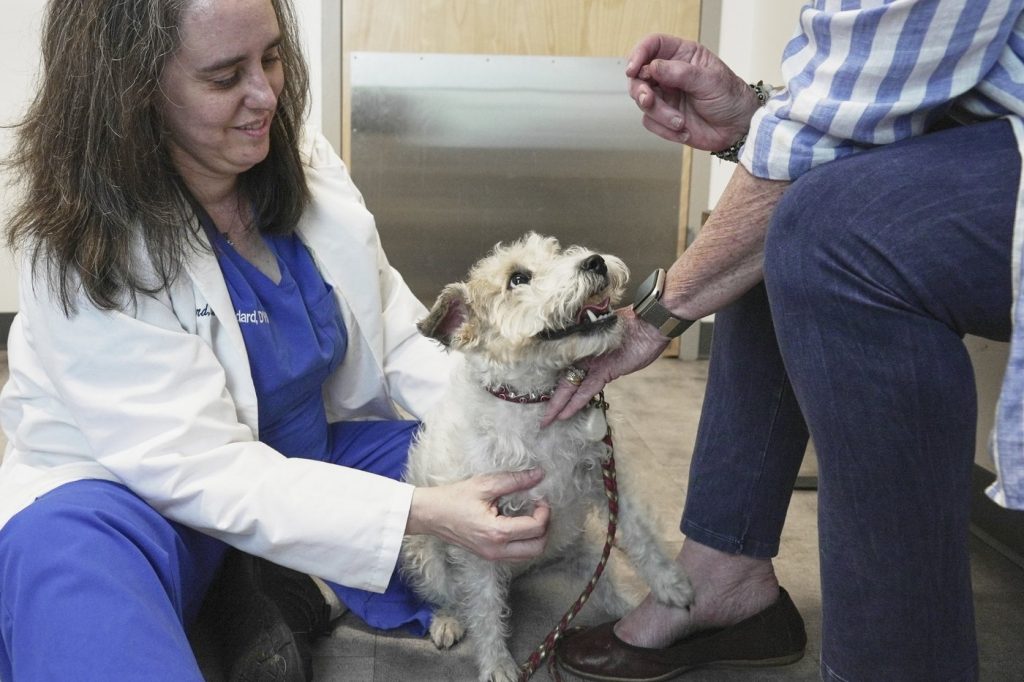About five years ago, Gail Friedman observed her Parson Russell Terrier, Mr. Friedman, persistently licking his paws and appearing discomforted. Concerned about his behavior, Friedman attempted various remedies, including putting baby socks on his feet and frequently washing them, but to no avail. Eventually, it was determined that Mr. Friedman was suffering from allergies.
Allergies in pets are a common and complex issue, triggered by numerous factors such as pollen, dust, mold, chemicals, and food. Veterinarians highlight that several methods exist to alleviate pets’ suffering from these allergies. Dr. Karen Woodard, medical director at Thrive Pet Healthcare-Elmhurst in Illinois, noted that about 90% of allergic pets respond to environmental triggers while the remaining 10% are affected by food allergies only.
Certain dog breeds, including boxers, bulldogs, and various terriers, are particularly susceptible to allergies. In felines, breeds like Persians, Siamese, and Himalayans often experience similar issues. Moreover, pets can be allergic to other animals, such as dogs to cats, and vice versa. Interestingly, it is also possible for pets to develop allergies to humans, mirroring allergies some humans have to them.
Identifying allergies in pets can be challenging, as dogs and cats typically don’t sneeze or cough like humans do. Instead, they exhibit signs such as scratching, licking, head shaking, and developing ear infections. Woodard shares that her own Yorkie mix, Teddy, began showing classic signs of allergies, like scratching and rashes, from the age of six months. For felines, excessive grooming leading to bald patches can indicate allergies. While food allergies usually manifest through skin issues, they may also result in vomiting or diarrhea in pets.
In rare cases, pets may experience life-threatening anaphylactic reactions, typically resulting from insect stings. However, the majority of allergies simply cause distress for the animals involved. Friedman expressed her heartbreak over Mr. Friedman’s condition, noting the humiliation he faced from wearing socks and, at times, the "cone of shame," which further restricted his mobility and comfort.
To aid pets suffering from allergies, the first step is seeking a diagnosis from a veterinarian. This may involve allergy testing or an elimination diet for suspected food allergies, which consists of introducing limited ingredients that have not been previously consumed. If the allergens are environmental, veterinarians may prescribe anti-inflammatory medications or newer oral and injectable drugs specifically designed to block chemical signals linked to itchiness. In cases of food allergies, special diets, such as "hydrolyzed" food—where proteins are chemically broken down—may be recommended.
Treatments can become quite costly, with Friedman estimating she spent around $10,000 on testing and care for Mr. Friedman and another allergic dog. Nevertheless, veterinarians suggest practical at-home measures, such as regularly cleaning pet bedding, wiping down their fur with a wet cloth, and ensuring consistent baths. Dr. Anthea Elliott Schick of Thrive notes that outdoor pets act like "little Swiffers," accumulating allergens on their skin, making regular bathing crucial, particularly for allergic animals.
Despite exhaustive efforts, Friedman admits her dogs continue to grapple with allergies, but acknowledges they are showing improvement. Her determination to explore all potential solutions reflects the ongoing struggle faced by pet owners dealing with allergies in their beloved furry companions.












